#82mm filter ring
Text
I ordered some eclipse stuff for Monday.
Got an 82mm 20-stop ND filter (and a 82-67mm step down ring so I can use it on the majority of my lenses that don't have such a large filter thread size). I also got some glasses so I don't burn my eyeballs out.
I reaaaally hope it's not cloudy 😅
15 notes
·
View notes
Note
Hi Lucas!
I need your advice on buying tiffen filters. I don't own any, so this will be my start. I've seen that you mentioned bronze glimmer glass 1 and gold diffusion fx 1/2 a lot. Also black pro mist 1/4 for a film look. Do you recommend them, or maybe have some other favs? Any tips on mixing (and overall using) them will also be appreciated. Btw I need them for my Canon 24-70mm.
As always - THANK YOU!
Most any of these filters are going to primarily reduce image quality, sharpness, and contrast on your images. It's meant to do that, and that's exactly why I use them. A lot of the times, especially when shooting humans, modern lenses and sensors are TOO high quality to the point I'm seeing inside someone's pores. The human eye doesn't register that much detail in real life settings, so I don't love it when these insane modern sensors are basically giving me a dermatology lesson for my subjects, lol.
The Black Pro Mist will slightly bloom highlights and raise the black levels in your image. Yes, you can do this in post, but it always looks more natural/organic when captured in-camera. 1/4th is the strength I'd recommend as it's noticeable to the discerning eye, but "normal" audiences won't necessarily know-- but the effect is there.
The bronze glimmer glass does similar with the highlights/shadows, but also gives a faint bronze cast, and what that does is mutes a lot of the warmer tones in the image. So, great for Canon users, as the native profile for Canons skew red.
The gold diffusion again does the same with highlights and shadows, but adds a nice golden color-cast to the image. This is great for amp'ing up warm tones at magic hour. I found the 1/2 strength, again, is subtle but effective.
I have a small collection of these Tiffen filters, but these three are the ones I find myself using the most. The Black Satin 1 is good for shooting portraits of civilians, as it is especially kind on the skin.
When buying, I recommend buying the 82mm filter size, then purchasing step-down rings to fit different lenses- that way you can use more versatile on many lenses. Unless your current lens is already 82mm and/or you have lenses that are bigger. But most lenses still are 82mm or smaller.
Pro-tip: if the strength of the filter is less that "1" (which most of mine are), you're going to see the effect most/strongest when you back-light your subject.
6 notes
·
View notes
Text
NiSi 100mm V7 Night Photography Kit
Features the new NiSi V7 Holder
Includes the new True Color CPL and adaptors for 67mm, 72, 77mm and 82mm
The holder allows the use of 3 square filters + 1 circular polarizer
No vignetting at 16mm (Full Frame)
Includes two filters: 100x100mm Natural Night and 100x150mm Star Soft
Includes the NiSi Caddy Pouch, Lens Cap, Clever Cleaner, Cleaning Cloth, and Blower
SAVE 15% compared to purchasing the included items separately.
Value if purchased separately $665
he NiSi 100mm V7 Night Photography Kit is designed for night photography and offers our popular Natural Night Filter, the new Star Soft Filter plus the NiSi V7 100mm Holder. The kit includes the most popular adaptor rings (67mm, 72mm, 77mm and 82mm) with others sold separately. The NiSi 100mm V7 Night Photography Kit represents a great saving compared to buying all the included items separately.
What’s included in the kit?
V7 100mm Holder
The NiSi V7 100mm Filter Holder Kit with True Color NC CPL and Lens Cap is the most advanced 100mm filter holder we have ever created, with a refined design based on feedback from photographers. The V7 allows for the easy use of up to three 100mm wide, 2mm thick filters along with an included brand new NiSi True Color Circular Polarizer Filter, and has no vignetting at 16mm with wide-angle lenses on full-frame.
It is made from aviation-grade aluminum with single element processing by CNC machine, and the matte black frosted finish on the surface minimizes reflections. The V7 kit comes complete with the 100mm filter holder, an ultra-slim True Color CPL, four adapter rings for the most popular wide-angle lenses (67mm, 72mm, 77mm, and 82mm), a lens cap, and a storage pouch. The V7 features a unique rotation wheel design, so the CPL filter can be rotated independently with filters still in place via a cog on the back of the filter holder.
This version of the V7 features the brand new True Color CPL that prevents the yellow cast introduced from most CPLs. The True Color CPL features our proprietary NiSi Pro Nano Coating helping to reduce unwanted reflections and provides a waterproof and oil-resistant layer to assist in the cleaning of unwanted fingerprints, dust, and water stains.
Our new Point to Point CPL Design allows for easier guided installation of the CPL into the main 82mm adapter. By lining the white markers on the CPL up with the white mark on the main adapter and twisting, you can easily secure the CPL in place, and remove it with little effort.
Our unique clip system is designed to grip only along the edges of the filter avoiding contact with the surface of the filter. Filters are easy to insert, and contact with a filter’s main surfaces are avoided, particularly when using graduated filters, whose effect can be adjusted to better suit changing lighting conditions or creative demands by sliding them up or down within a filter slot.
Use of the NiSi V7 100mm Filter Holder can be easily accomplished by first screwing the included 82mm adapter ring onto a lens with 82mm front filter threads. Step-up rings are included to allow the adapter ring to be used with lenses that have 67mm, 72mm, or 77mm front filter threads, with additional step-up rings available separately for lenses with 49mm, 52mm, 55mm, 58mm, or 62mm front filter threads. After being fitted onto the adapter ring, the filter holder’s pull-and-release locking pin helps to provide a reliable connection that allows the holder to be rotated 360°. To further secure the position of the filter holder, it features a lock that can be activated by rotating a small wheel around the release pin which prevents any rotation of the filter holder.
Adapter rings for lenses with 86mm or 95mm front filter threads are also separately available. The combination of either of those adapter rings with the filter holder cannot accommodate a NiSi 86mm circular polarizer filter; however, a polarization effect can instead be obtained by placing a separately available, 100mm wide, 2mm thick polarizer filter between one pair of the filter holder’s slots.
The V7 kit includes a push-on lens cap that will protect the CPL while still connected to a lens and a padded holder pouch for safe storage and transport.
Natural Night
The NiSi Natural Night Filter is our first filter exclusive for night photography. Between mercury vapor, sodium, Low CRI streetlights, there are many undesirable wavelengths of light that pollute the night sky. The glow from these can keep your camera from seeing the sky properly and effect your night images. Because of this, NiSi has created the Natural Night Filter to block the most common wavelengths of light pollution.
Star Soft
The NiSi 100x150mm Star Soft Astrophotography Filter is a filter for astrophotography designed to make stars appear bigger and to make constellations stand out. The brighter the star the bigger it will appear. Make the constellations and stars sparkle in your night sky images.
The Star Soft Astrophotography Filter is designed just like a GND filter with the effects full strength on the top 100mm of the filter, while the bottom 50mm is clear with no effect. This will allow placement so the effect can enhance the stars without affecting the foreground. Some photographers tell us they love the effect also on the foreground so the filter can be pushed all the way down in the filter holder to have the effect over the entire scene.
The Star Soft Astrophotography Filter has no loss in light and offers a neutral tone with no added color cast. The filter is compatible with our V6 100mm holders and compatible holder that supports 100mm wide filters at 2mm thickness.
100mm Caddy Filter Pouch
The NiSi Caddy 100mm Filter Pouch for 9 Filters is designed for the NiSi 100mm system filters and will hold 4 x 100x100mm and 5 x 100x150mm. It features an adjustable cross-body sling strap and can be carried as a shoulder bag, messenger bag or waist bag. It can be conveniently mounted on a tripod leg for easy access and use and is designed from a lightweight material that protects your filters from scratches. The pouch can hold up to 9 filters in the combination 4 x 100x100mm and 5 x 100x150mm and features a flip-top design to keep the pouch open when in use.
The NiSi Caddy 100mm Filter Pouch can also hold a NiSi 100mm V7 holder in the first slot of the pouch (reducing the filter slots to 8).
The case is very light coming in at 350g and while still small enough to fit into most camera bags. The physical dimensions are: 19cm x 13.5cm x 8cm.
0 notes
Text
HIFFIN® Lens Filter Step Up CONVERTION Rings Set 8 Pcs 49 mm-82 As Hood
Price: (as of – Details)
From the manufacturer
HIFFIN Lens Filter Step Up CONVERTION Rings Set
This is a 49mm-82mm (49mm-52mm, 52mm-55mm, 55mm-58mm, 58mm-62mm, 62mm-67mm, 67mm-72mm, 72mm-77mm,77mm-82mm) step up filters ring steping adapterIt is made with light weight and durable aluminum material. You may also combine multiple step rings to fit even larger filtersThis 62mm-67mm step up filters…

View On WordPress
0 notes
Video
vimeo
The Triangle Exposure from Erik Conn on Vimeo.
The Triangle Exposure Explained by Erik Conn from EShootsVideos.com
eshootsvideos.com/
erikconnweddings.com/
instagram.com/erik_conn/
facebook.com/erikconn/
twitter.com/erikconnwedding
The exposure triangle consists of three variables that adjust how a camera captures light: aperture, shutter speed, and ISO. Together, these three elements properly expose a shot. The three variables of the exposure triangle are all dependent on each other
Tools I Used for Triangle Exposure Video
Canon EOS R6
amzn.to/3HHWRkU
Canon EOS R
amzn.to/3hCe0SA
Sigma 18mm-35mm 1.8
amzn.to/3FZXwwI
Rode VideoMic Pro
amzn.to/3Wp9kht
Saramonic Upgraded Blink500 Pro B2 2.4GHz Dual-Channel
Wireless Lavalier Microphone
amzn.to/3vhDlEF
Neewer Advanced 2.4G 660 LED Video Light
amzn.to/3HNv16P
ULANZI Claw Quick Release Plate Tripod QR Camera Mount Adapter
amzn.to/3BGLKEU
REYTRIC 2-Pack NP-F970 Battery
amzn.to/3FJ1QPU
Neewer LED Light Panel Softbox for 660/530/480 LED Light
amzn.to/3v02Qdc
SmartQ C368 USB 3.0 SD Card Reader
amzn.to/3hCdTGv
INIU Portable Charger
amzn.to/3Ws2s2O
72mm to 82mm Camera Filters Ring
amzn.to/3G0tWr3
ANDYCINE Monitor Cage with Sunhood for Atomos Ninja V/Ninja V+
amzn.to/3uWFo0n
Nitze Magic Arm with Double Ballheads (1/4" Screws) Adjustable Articulating Arm
amzn.to/3HKyD9Q
Duttek Mini HDMI to HDMI Cable, HDMI to Mini HDMI Cable
amzn.to/3W7WNz9
EOS R Camera Cage,EOS R Cage for Canon EOS R
amzn.to/3je1ZTiPhone
0 notes
Text
Haida Pro II CPL-VND 2 In 1 Filter - Review
If you are thinking of adding Haida gear to your kit, please consider using my links to Adorama or the Haida Store on Amazon. Referral purchases help support independent photography gear reviews like this. This is not a paid review. Read Scott’s Disclaimer Stuff for more.
Polarizing filters and neutral density filters are a mainstay for vloggers and landscape photographers. Variable neutral density filters offer the convenience of several ND stops in a single package. And the way variable neutral density filters work, they are in and of themselves polarizers - with one big drawback. You cannot rotate the angle of polarization in a typical VND. The Haida Pro II CPL-VND 2 In 1 filter solves that problem.
This filter packs a circular polarizer and a variable neutral density filter into a single screw-in package. It is very versatile and easy to use. My friends at Haida shared the filter with me so I could put it through its paces.
What Is The Haida Pro II CPL-VND 2 In 1 Filter?
The Haida Pro II CPL-VND 2 In 1 Filter is a circular polarizer (CPL) and a variable neutral density (VND) filter. The VND gives you a range of 3 to 7 stops of ND power. And you can rotate the CPL independently of the VND setting. The critical information:
Circular polarizer
Variable ND filter, 3 to 7 stops
Available in 67mm, 77mm, and 82mm sizes
Incredibly light, less than 50 grams
No vignetting > 17mm and no X patterns - the design of the VND prevents over-rotation
Like any screw-in filter, if you have multiple lenses of varying diameters, purchase the size that will fit your largest lens. Then use stop-down rings to adapt it to your smaller lenses.
Who Is This Filter For?
I think there are two groups of visual creatives the CPL-VND 2 In 1 filter will benefit.
Film makers & vloggers: This filter is a clear win for anyone doing vlogging or capturing B-roll for films. A vlogger does not want to fiddle with filters. Vloggers need to get the footage they need and move on. Likewise with B-roll or a secondary camera capturing behind the scenes footage. The versatility this filter offers means a faster field workflow.
Budding or casual landscape photographers: If you are a part-time landscape photographer or just starting out with landscape photography, a complete filter system with holders and slide-in glass can be a daunting purchase. This 2-in-1 filter offers a great value (see Pricing below) and covers a large portion of the filter space landscape photographers need.My 4 and 6 stop ND filters are my workhorses.
I make landscape images all the time - it’s what I do. I love my Haida M10 system and the line-up of ND filters I have. I can make any image I need in just about any lighting condition. However, my workhorse filters are my 4 stop and 6 stop NDs, plus a polarizer. The Haida CPL-VND 2 In 1 Filter easily covers that space. For a part-time landscape photographer, or are on a budget (who isn’t!), this single package gives you a lot of versatility. I would add a singular polarizer to round out a basic landscape kit, too, though. We don’t always need 3+ stops of ND power for our photos.
I’m using the Haida CPL-VND 2 In 1 for vlogging and behind-the-scenes footage. I can capture video at wider apertures like f/4, keeping my shutter speed at 1/50s for a cinematic feel, and keep the scene well-exposed.
Build Quality
The construction and build quality of the Haida Pro II CPL-VND 2 In 1 Filter is excellent. The filter is metal, an aluminum alloy. The glass is K9 optical glass with 16-layer coatings on both sides. It is waterproof, oil proof, and scratch resistant. The small lever that screws into the VND portion of the filter is also very sturdy. I pressed and pulled and tugged on it in a variety of ways and it held fast and true.
Both the CPL and VND rotate smoothly. Haida has struck a great balance of friction and fluidity. The friction is low enough that the filter rotates cleanly with little effort. Yet, once you have it in the position you want, there is enough resistance that the CPL and VND stay in place. Moving or shaking the filter or camera do not change the settings you’ve dialed in. That’s important for handheld video work, where you may be following a subject and moving your camera with some speed.
Another attention to detail is the clear markings on the VND ring. The ND stops are clearly marked - and the design of the filter prevents over-rotation. 3 stops of VND is the minimum, 7 is the maximum, and you cannot rotate the VND beyond those points. Kudos to Haida on this part of the design.
Using The Filter
When you first unbox the filter, you’ll have to screw the small lever into the VND portion of the filter. It’s very simple. Then screw the filter into your lens. Actual adjustment of the filter is very simple. Dial in the number of stops with the VND lever and rotate the polarizer as needed.
I do recommend that you adjust the VND first, then rotate the CPL. Why? Well … two reasons. First, a VND is in and of itself a polarizer. So dial in the ND stops you need first, get that set. Then, adjust the polarizer to cut glare and reflections as needed. Second, when adjusting the VND, you can slightly move the polarizer setting if you bump the lever against the 3 ND or 7 ND position.
For my behind the scenes work, I often prefer to capture at a wider aperture like f/4 or f/2.8 and keep focus on the subject (usually me). The screen captures here show how blown out the scene was without a filter. Adding the CPL-VND at the 3-stop setting helped tremendously, dialing it down to a 6-stop setting reigned the the sky. A final rotation to the polarizer took care of the glare from the wet rocks and ocean.
Image Quality
I tested this filter for video work using a Sony A6400 (crop sensor) with a 20mm prime lens (a ~34mm-ish equivalence). The image results using the filter are great. I did not encounter any obvious color casts, vignetting, or X patterns.
Pricing And Availability
The Haida Pro II CPL-VND 2 In 1 Filter will be available in late July 2022. The retail pricing is US$78 for the 67mm filter, US$92 for the 77mm, and US$109 for the 82mm. That is a very attractive price point for the features and versatility you get from this filter.
0 notes
Text
Evaluation- Haida Interchangeable Magnetic Variable ND filter on wide- angle lens.
Evaluation- Haida Interchangeable Magnetic Variable ND filter on wide- angle lens.
Introduction.
Testing for optimal sharpness, tonality, vignette, bokeh, X-pattern issues, design, functionality, accuracy of stops & colour shifts. Including in-camera video and real time experience from my home in the north of Scotland.
What comes in the box?
One cardboard box with two separate plastic boxes each with internal moulded foam insert to keep your filters protected ..Box (1) One…
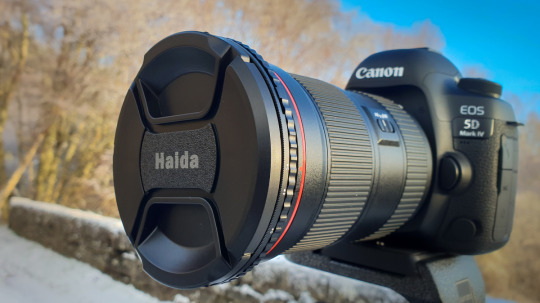
View On WordPress
#2-5 stops ND#6-9 stops ND#82mm filter ring#Adobe creative cloud#canon 16-35mm Lens USM L#Canon 5d mark iv#China#field test#Haida#Haida Filter#Haida Interchangeable Magnetic Variable ND#image sharpness#Interchangeable#jenny cameron#Jenny Cameron test reviews#landscape#landscape photography#landscapephotography#long exposure#magnetic attraction#magnetic filters#Nano-pro#ND filters#no light leakage#Photography#videography#wide angle lens#X-pattern#YouTube
1 note
·
View note
Text
Filter GND – Graduated Neutral Density là gì?
Filter GND hay còn gọi là kính lọc phân cực về cơ bản là một tấm nhựa (resin) hoặc thuỷ tinh hình chữ nhật hoặc hình vuông có hai phần tách biệt với một phần tối hơn. Loại filter này luôn phải được “trung tính” vì khi ánh sáng đi qua kính lọc này phải được dảm bảo rằng luôn giữ được tối đa tính chất của nó, tức là không tạo ra bất cứ sự khác biệt về màu sắc hoặc sự sai khác về ánh sáng. Điều này được các hãng filter lớn như Lee hay Singhray làm rất tốt, nhưng có thể chưa được đảm bảo với những hãng ít tên tuổi hơn (Xem bài: Các hãng filter GND và ND phổ biến). Về điểm này thì tôi đề xuất các bạn nên sử dụng Lee Filters, đó là bộ filter tôi đang sử dụng và rất hài lòng về độ bền, tiện dụng cũng như độ “trung tính” của ánh sáng khi đi qua filter.
Khác với các loại filter tròn lắp trực tiếp vào ống kính (lens), để sử dụng GND bạn cần một bộ filter gồm các thành phần sau: Holder, Ring và Filter. Holder là khung để giữ filter phía trước ống kính, ring giúp kết nối giữa holder và lens với nhau. Tuỳ kích cỡ filter của lens mà tôi có thể chọn các loại holder, ring cho phù hợp. Với các lens thông thường hiện nay thì bộ filter phổ biến là hình chữ nhật kích cỡ 150x100mm. Ring sử dụng tuỳ vào đường kính lens của bạn 72mm, 77mm hay 82mm.
Để đảm bảo cho vùng sáng (over-exposure) không bị mất chi tiết thì việc sử dụng filter GND là điều cần thiết. Nếu không sử dụng filter GND, thông thường vùng trời sẽ bị cháy mặc dù vùng tiền cảnh sẽ đúng sáng khi tôi đo sáng vào tiền cảnh, hoặc vùng trời sẽ đúng sáng và tiền cảnh bị tối om nếu tôi đo sáng vào bầu trời. Tôi có thể cứu một phần khi hậu kỳ ở Photoshop, nhưng sẽ rất khó khăn và không thể hồi phục lại được toàn bộ chi tiết, bức ảnh có thể sẽ rất nhiều noise và xấu. Trong khi yêu cầu của tôi về ảnh phong cảnh rất khắt khe, các vùng sáng không thể uyển chuyển mượt mà như mong muốn.
Khi nào sử dụng filter GND?
Hầu hết các photographer nổi tiếng đều sử dụng filter GND khi chụp phong cảnh bình minh hay hoàng hôn (sunset hay sunrise) vào giờ vàng (golden hour). Bạn có thể sử dụng để cân bằng ánh sáng giữa tiền cảnh và hậu cảnh, hoặc để tạo các hiệu ứng đặc biệt như làm chậm chuyển động (slow-motion) của sóng biển, sông suối, làm mờ (blur) các chuyển động của người và vật thể. Những bức ảnh đẹp nhất là những bức ảnh mà người chụp kiểm soát được ánh sáng, filter GND là một công cụ giúp bạn thực hiện điều đó.
Các loại filter GND và kinh nghiệm lựa chọn
Một điều nữa mà bạn cần cân nhắc đó là các loại filter cần có. Filter GND chia làm 2 loại là loại cứng (hard-edged) và mềm (soft-edged), mỗi loại tương ứng có các sản phẩm khác nhau từ loại giảm 1-stop đến 3-stop phù hợp với từng điều kiện ánh sáng.
Loại Soft-edged là loại mà đường ngăn cách vùng tối và vùng sáng của filter mềm hơn, phù hợp khi bạn chụp những phong cảnh mà đường chân trời không được tách biệt rõ ràng như chụp thành phố, núi non (đường chân trời bị khuất một phần bởi các toà nhà hoặc núi non). Loại Hard-edged là loại mà đường ngăn cách vùng sáng và vùng tối của filter được nhận biết rất rõ ràng, phù hợp khi bạn chụp những phong cảnh mà bầu trời và tiền cảnh (foreground) được tách biệt rõ ràng bởi đường chân trời như chụp sông nước, biển cả.
Khi mà độ chênh sáng giữa bầu trời và tiền cảnh quá lớn, bạn nên sử dụng loại giảm nhiều stop như Lee filter GND 0.9 giảm 3-stop. Nếu độ chênh sáng không quá khác biệt như khi mà mặt trời vừa lặn hoặc chuẩn bị lên (giờ xanh – blue hour), bạn có thể sử dụng loại 0.3 giảm 1 stop. Bạn có thể tham khảo các sản phẩm của Lee filters trong bảng dưới đây:
Loại filter giảm bao nhiêu stop bạn có thể lựa chọn và sử dụng sao cho phù hợp với từng điều kiện. Nếu có điều kiện về tài chính bạn có thể mua theo Parkage của Lee gồm 2 bộ Hard-edged và Soft-edged, mỗi bộ gồm 3 filter 0.3ND, 0.6ND và 0.9ND giảm tương ứng 1,2,3-stop. Hoặc dư dả hơn một chút bạn có thể mua loại GND Reserved chất lượng cao của Singhray, đó là loại filter mà phần trên cùng của filter ánh sáng đi qua với cường độ trung bình, sau đó tối dần, rồi lại sáng dần đến đường giữa filter. Loại filter này khắc phục được nhược điểm của filter GND thông thường là vùng tối nhất lại ở trên cùng của filter, làm cho ảnh chụp sẽ bị rất tối ở hai góc trên cùng cũng như vùng bầu trời phía trên. Tất nhiên giá của Singhray GND Reserved cũng rất cao.
Tuy vậy với nhu cầu cơ bản bạn có thể tham khảo bộ Lee filters của tôi gồm 2 filter GND, một loại soft 0.6ND và một loại hard 0.75ND và 1 filter ND vuông giảm 6-stop (Lee little stopper). Với bộ này tôi đảm bảo được các loại ảnh phong cảnh cần chụp từ Landscape, Seascape cho đến Cityscape, và có thể kết hợp các loại filter này trong nhiều trường hợp khác nhau. Bạn cần chú ý rằng mỗi loại hard hay soft bạn chỉ cần mua 1 filter làm filter chính, nhưng nên chọn loại giảm từ 2 stop trở lên, tốt nhất là 2,5 hoặc 3 stop vì thông thường độ chênh sáng trong điều kiện bình minh hay hoàng hôn là rất mạnh. Chỉ nên mua loại giảm 1 stop khi dư dả và dùng kết hợp với filter chính trong mỗi điều kiện cụ thể.
Một kinh nghiệm nữa là nếu ai có điều kiện thì nên mua Lee filters vì đây là việc đầu tư dài hạn, bạn sẽ không phải băn khoăn về chất lượng kính cũng như ảnh chụp ra. Giá có thể đắt hơn những loại khác như Cokin, Hitech,.. nhưng nó rất đáng tiền. Máy móc có thể thay đổi nhưng filter GND là thứ gần như phải có trong bộ đồ nghề với những ai muốn nghiêm túc đi theo con đường chụp ảnh phong cảnh, và việc sử dụng Lee filter hay cao cấp hơn là Singhray bạn sẽ không phải lo nghĩ đến việc đổi loại filter khác trong tương lai. Nếu mua loại kém chất lượng hơn mà ảnh không như ý thì việc đổi filter sẽ gây tốn kém chi phí hơn nhiều.
Sử dụng filter GND như thế nào?
Việc sử dụng ban đầu sẽ hơi bỡ ngỡ vì phải tháo lắp holder và ring cho ống kính, gây ra sự bất tiện. Việc sử dụng filter nào trong từng hoàn cảnh cũng khó khăn với những người cho có nhiều kinh nghiệm. Nhưng khi sử dụng vài lần bạn sẽ nhanh chóng quen hơn và thành thục rất nhanh. Quá trình sử dụng filter GND khi chụp phong cảnh theo lý thuyết có thể theo các bước sau:
Thiết lập máy ảnh của bạn trên tripod (chân máy), cố định vị trí trước khung cảnh muốn chụp và nhớ cài đặt máy ở chế độ Manual. Sau đó bật Viewfinder, đo sáng vào tiền cảnh để tiền cảnh đúng sáng rồi ghi nhận chỉ số đo sáng mà máy ảnh đo được. Tiếp tục thực hiện bước trên với việc đo sáng vào h���u cảnh (bầu trời).
Sau khi ghi nhận được 2 chỉ số đo sáng trên bạn tính toán mức độ chênh lệch đo sáng giữa tiền cảnh và hậu cảnh, rồi sử dụng filter GND với thông số thấp hơn 1 stop của chỉ số chênh lệch. Ví dụ nếu bạn đo được bầu trời sáng hơn so với tiền cảnh là 3-stop, bạn chọn filter GND giảm 2-stop hay loại 0.6 ND Grad.
Di chuyển filter dọc theo trục của holder để sao cho đường phân cực của filter khớp với đường chân trời, hoặc bạn có thể thực hiện một số điều chỉnh cho phù hợp từng điều kiện cụ thể như trường hợp tiền cảnh có một số vật thể chắn ngang, hay việc chọn filter cứng hay mềm tuỳ vào chụp seascape hay cityscape.
Sau khi đã cố định được thông số, góc chụp, vị trí filter, tiến hành chụp qua dây bấm mềm để tránh rung máy. Kiểm tra lại kết quả thu được để có những điều chỉnh cần thiết nếu cần chụp lại.

"QC" Ro Phi studio chuyên cung cấp dịch vụ Viral - Animation 2D 3D
748 Thống Nhất, Phường 15, Gò Vấp, Thành phố Hồ Chí Minh
Hotline: 0972 123 018
Mail: [email protected]
Fb: https://www.facebook.com/rophistudio
TC: https://seotukhoa.com.vn
1 note
·
View note
Text
VOUVOU R-77L 77mm Magnetic Lens Filter Adapter Ring Compatible with DSLR Camera Universal Filter Mouting Ring
VOUVOU R-77L 77mm Magnetic Lens Filter Adapter Ring Compatible with DSLR Camera Universal Filter Mouting Ring
Price: (as of – Details)
67mm/72mm/77mm/82mm(optional)
Note: The camera and filters showed in the picture are not included.
Packing List: 1 * Adapter Ring
🥁[Made by high suction magnet, firm and not easy to fall off.🥁[Compatible with most of magnetic filter in the market.🥁[The filter can be quickly disassembled or switched from the adapter ring by magnetic suction.🥁[Easy to install to your…
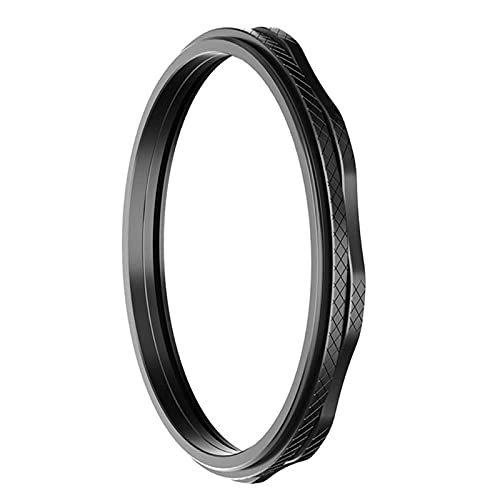
View On WordPress
0 notes
Text
Long shutter speed photography, what do I need?
Long shutter speed photography is a branch in photography which is characterized by its specific and striking features in the photograph with respect to movement. The flowing water is "frozen" and the movement of the water is in a sense stopped while the movement of the clouds is made visually visible. Here again, there are several gradations which depend on the length of your shutter speed. Besides your camera and lens, you will certainly need some more accessories for this type of photography. We work with slow shutter speeds, at least 10 seconds to minutes, so a sturdy and stable tripod is certainly no luxury. I stress, a sturdy and stable tripod. A tripod that already sags through its legs when you set it down is certainly not stable and certainly not suitable for this branch of photography. Obviously indispensable, and actually the basic equipment for this branch of photography, are the gray filters, called ND filters. These exist in the round shape with a certain diameter (the circular or screw-on filters). The diameter of the filter corresponds to the filter diameter of the lens. In principle, you should therefore have a different ND filter for each lens with a different filter diameter. Moreover, the filters come in different densities so you understand that would be an expensive matter. But here is a solution. Look at your lenses and take the lens with the largest filter size. Suppose this is 82mm. Then you buy an ND filter with a diameter of 82mm. Do you now also have a lens with a filter size of 67 mm? Then you buy a so-called adapter ring or step-up ring 82/67mm. At the front of this adapter ring you screw the ND filter with a diameter of 82mm and the other side of this ring corresponds to the diameter filter size of your lens, so 67mm. The ND filters are gray filters and should basically be color neutral. And this degree of color neutrality depends on the quality and thus also related to this the price of the filter. But the quality is determined by several aspects. Glass or plastic. Filters made of glass are more resistant to scratches. So my preference goes to glass. The next quality characteristic is how the filter gets its color. What I mean by this is the following. The filter can consist of a blank piece of glass where the color is vaporized on both surfaces. This coating creates the color gray. A disadvantage of this filter coating is that if an unexpected scratch occurs on your glass, this coating will be damaged first, making your filter "leaky" and unusable. The more expensive filters are colored through and through. A third difference in quality lies in the fact that a good filter is color neutral. In other words, no residual color is created. I myself use circular filters from B&W. But the range of different brands is large. A general advantage of the circular or screw-on filters is that you can continue to use the lens hood. The screw-on filters can also be stacked, so two ND filters on top of each other. If you also use a UV filter, screw it off the lens. With the circular or scrubber filters you can only use the uniform and full color filters. The so-called gray gradient filters, which are filters that are gray at the top and lighter in color towards the bottom, are not to be used with the exfoliation filters. In addition to the circular, and thus more or less diameter dependent filters, you also have the filter systems consisting of a filter holder and a wider variety of ND filters. But this is for another article.
Michel jansen.
*** Translated with www.DeepL.com/Translator (free version) ***
0 notes
Text
9pcs Camera Lens Filter Step 37mm-82mm Up Ring Adapter for Canon Nikon Sony All Camera DSLR
9pcs Camera Lens Filter Step 37mm-82mm Up Ring Adapter for Canon Nikon Sony All Camera DSLR
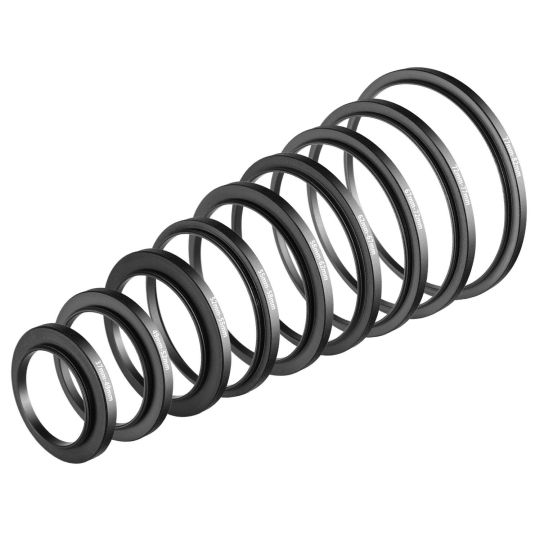
lastest_volume
2
Just For Today
Click Here To Visit The Shop
N€W 9pcs Camera Lens Filter Step 37mm-82mm Up Ring Adapter for Canon Nikon Sony All Camera DSLR
0 notes
Text
*New* NiSi V7 100mm Filter Holder Kit with True Color NC CPL and Lens Cap
Allows the use of three square filters + one circular polarizer
Includes the True Color CPL which prevents the yellow cast introduced from most CPL
Point to Point CPL Design allows for easier guided installation of the CPL
Includes 4 adapter rings, filter holder, and CPL
Quickly remove and install the CPL with the brand new mount
360-degree rotation with lock for fixing filter position
Very smooth insertion and removal of filters
New rotation lock design combined with the release pin
No vignetting on ultra-wide lenses at 16mm
Includes a storage case and lens cap
The NiSi V7 100mm Filter Holder Kit with True Color NC CPL and Lens Cap is the most advanced 100mm filter holder we have ever created, with a refined design based on feedback from photographers. The V7 allows for the easy use of up to three 100mm wide, 2mm thick filters along with an included brand new NiSi True Color Circular Polarizer Filter, and has no vignetting at 16mm with wide-angle lenses on full-frame.
It is made from aviation-grade aluminum with single element processing by CNC machine, and the matte black frosted finish on the surface minimizes reflections. The V7 kit comes complete with the 100mm filter holder, an ultra-slim True Color CPL, four adapter rings for the most popular wide-angle lenses (67mm, 72mm, 77mm, and 82mm), a lens cap, and a storage pouch. The V7 features a unique rotation wheel design, so the CPL filter can be rotated independently with filters still in place via a cog on the back of the filter holder.
This version of the V7 features the brand new True Color CPL that prevents the yellow cast introduced from most CPLs. The True Color CPL features our proprietary NiSi Pro Nano Coating helping to reduce unwanted reflections and provides a waterproof and oil-resistant layer to assist in the cleaning of unwanted fingerprints, dust, and water stains.
Our new Point to Point CPL Design allows for easier guided installation of the CPL into the main 82mm adapter. By lining the white markers on the CPL up with the white mark on the main adapter and twisting, you can easily secure the CPL in place, and remove it with little effort.
Our unique clip system is designed to grip only along the edges of the filter avoiding contact with the surface of the filter. Filters are easy to insert, and contact with a filter’s main surfaces are avoided, particularly when using graduated filters, whose effect can be adjusted to better suit changing lighting conditions or creative demands by sliding them up or down within a filter slot.
Use of the NiSi V7 100mm Filter Holder can be easily accomplished by first screwing the included 82mm adapter ring onto a lens with 82mm front filter threads. Step-up rings are included to allow the adapter ring to be used with lenses that have 67mm, 72mm, or 77mm front filter threads, with additional step-up rings available separately for lenses with 49mm, 52mm, 55mm, 58mm, or 62mm front filter threads. After being fitted onto the adapter ring, the filter holder’s pull-and-release locking pin helps to provide a reliable connection that allows the holder to be rotated 360°. To further secure the position of the filter holder, it features a lock that can be activated by rotating a small wheel around the release pin which prevents any rotation of the filter holder.
Adapter rings for lenses with 86mm or 95mm front filter threads are also separately available. The combination of either of those adapter rings with the filter holder cannot accommodate a NiSi 86mm circular polarizer filter; however, a polarization effect can instead be obtained by placing a separately available, 100mm wide, 2mm thick polarizer filter between one pair of the filter holder’s slots.
The V7 kit includes a push-on lens cap that will protect the CPL while still connected to a lens and a padded holder pouch for safe storage and transport.
0 notes
Text
Mettzchrom Filter Step Up Rings Adapter 49-52mm 49-55mm 49-58mm 49-62mm 49-67mm 49-72mm 49-77mm 49-82mm
Mettzchrom Filter Step Up Rings Adapter 49-52mm 49-55mm 49-58mm 49-62mm 49-67mm 49-72mm 49-77mm 49-82mm
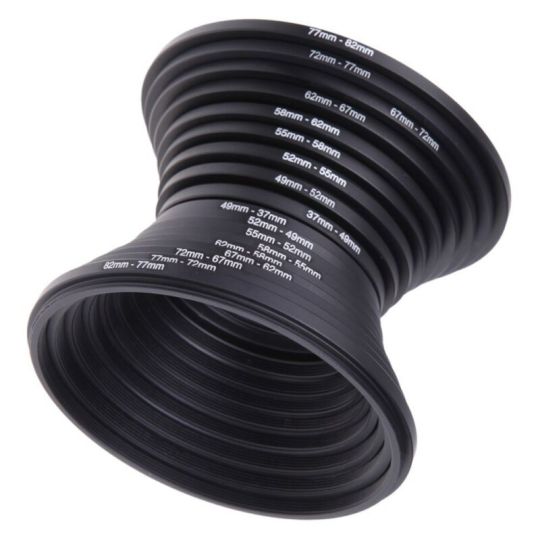
Mettzchrom Filter Step Up Rings Adapter 49-52mm 49-55mm 49-58mm 49-62mm 49-67mm 49-72mm 49-77mm 49-82mm
Price
5
Catch me HERE
0 notes
Text
37-43 40.5-46 40.5-49 49-82 52-82 55-82 58-82 62-82 67-82 72-82mm Metal Step Up Rings Lens Adapter Filter Set
37-43 40.5-46 40.5-49 49-82 52-82 55-82 58-82 62-82 67-82 72-82mm Metal Step Up Rings Lens Adapter Filter Set
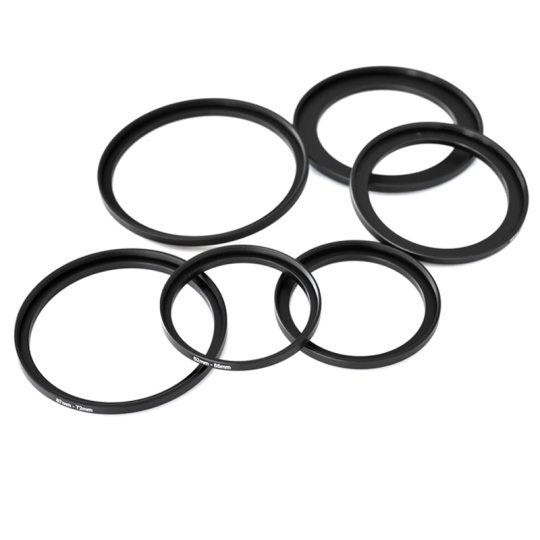
37-43 40.5-46 40.5-49 49-82 52-82 55-82 58-82 62-82 67-82 72-82mm Metal Step Up Rings Lens Adapter Filter Set
Price
1.5
Catch me HERE
0 notes
Photo
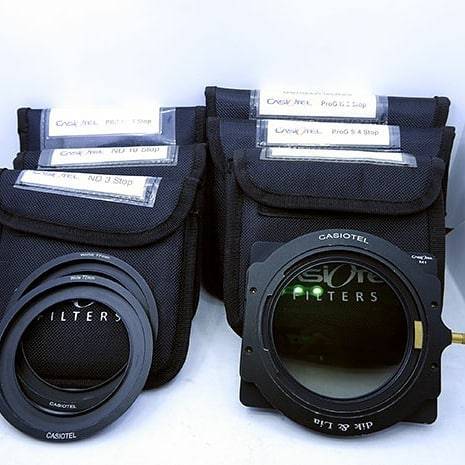
Filter casiotel ND 3 stop ND 6 stop ND 10 stop Hard 3 stop Soft 4 stop holder + CPL casiotel (82mm) + 72 dan 77mm adapter ring Jual Sepaket (tidak di ecer) harga sdh super murah ya. bagi yg mau check harga monggo lihat2 dulu ya. kondisi semuanya 95%. beret halus tidak ada prefer ke toko, check sendiri, sambil free kopi kelengkapan: tas filter ND 3 stop ND 6 stop ND 10 stop Hard 3 stop Soft 4 stop holder + CPL casiotel (82mm) + 72 dan 77mm adapter ring rp. 5.500.000 NET oentoeng.com Whatsapp: 082136599888 #oentoengkamera #tokokamera #belikamerasurabaya #jualkamera #jualkamerabekas #jualkamerasecond #jualkamerasurabaya #kamerabekas #kamerasecond #jualcanon #jualnikon #jualfujifilm #juallensa #camerabekas #camerasecond #filtercasiotel #casiotel #jualcasiotel (at Surabaya, Indonesia) https://www.instagram.com/p/CLI2m-xF_JJ/?igshid=10ybo2e0086p4
#oentoengkamera#tokokamera#belikamerasurabaya#jualkamera#jualkamerabekas#jualkamerasecond#jualkamerasurabaya#kamerabekas#kamerasecond#jualcanon#jualnikon#jualfujifilm#juallensa#camerabekas#camerasecond#filtercasiotel#casiotel#jualcasiotel
0 notes
Photo
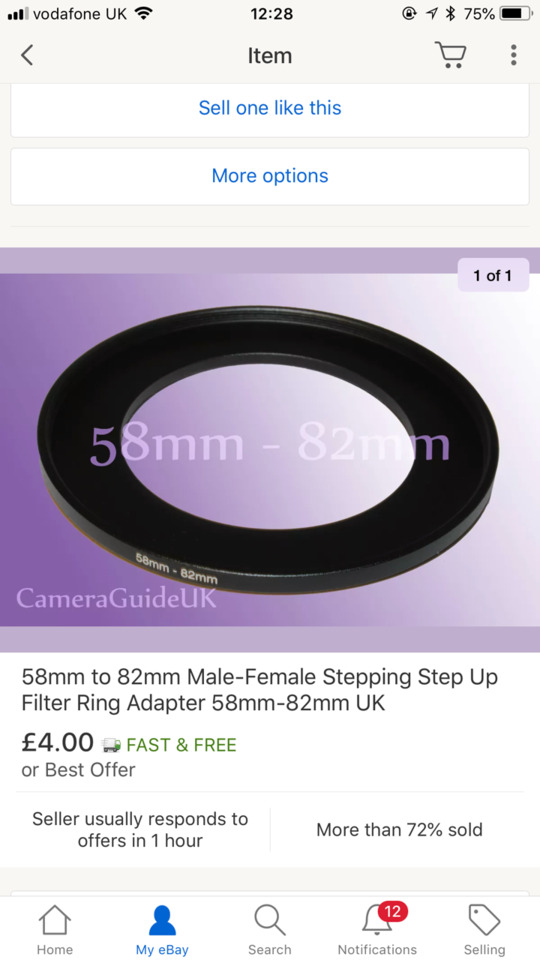
I managed to find a step down adapter ring on EBay to create my kaleidoscope lens with. 82mm should fit the plastic filter that my wooden kaleidoscope toy has. I am looking forward to making this little filter and getting to experiment with it.
1 note
·
View note